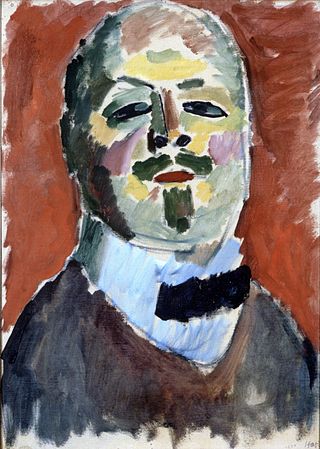
Alexej Georgewitsch von Jawlensky, surname also spelt as Yavlensky, was a Russian expressionist painter active in Germany. He was a key member of the New Munich Artist's Association, Der Blaue Reiter group and later Die Blaue Vier.

The Museo Nacional Centro de Arte Reina Sofía is Spain's national museum of 20th-century art. The museum was officially inaugurated on September 10, 1992, and is named for Queen Sofía. It is located in Madrid, near the Atocha train and metro stations, at the southern end of the so-called Golden Triangle of Art.
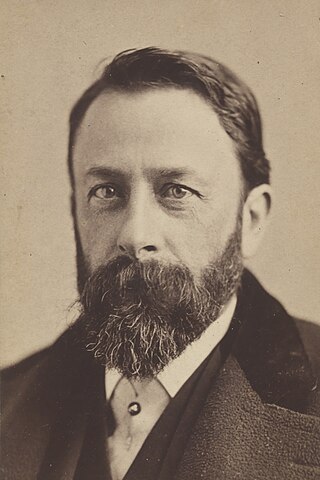
Albert Bierstadt was a German American painter best known for his lavish, sweeping landscapes of the American West. He joined several journeys of the Westward Expansion to paint the scenes. He was not the first artist to record the sites, but he was the foremost painter of them for the remainder of the 19th century.

Giovanni Battista Moroni was an Italian painter of the Mannerism. He also is called Giambattista Moroni. Best known for his elegantly realistic portraits of the local nobility and clergy, he is considered one of the great portrait painters of the Cinquecento.
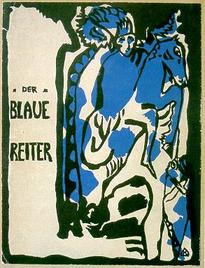
Der Blaue Reiter was a group of artists and a designation by Wassily Kandinsky and Franz Marc for their exhibition and publication activities, in which both artists acted as sole editors in the almanac of the same name. The editorial team organized two exhibitions in Munich in 1911 and 1912 to demonstrate their art-theoretical ideas based on the works of art exhibited. Traveling exhibitions in German and other European cities followed. The Blue Rider disbanded at the start of World War I in 1914.
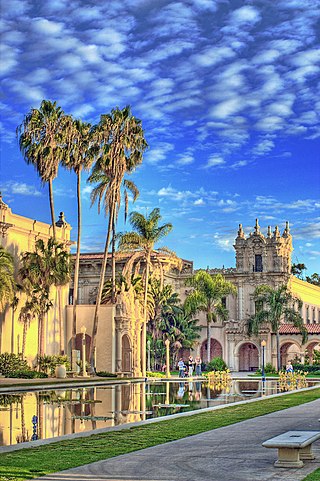
The California Pacific International Exposition was an exposition held in San Diego, California, during May 29, 1935–November 11, 1935 and February 12, 1936–September 9, 1936. The exposition was held in Balboa Park, San Diego's large central urban park, which had also been the site of the earlier Panama–California Exposition in 1915.

The Museum Wiesbaden is a two-branch museum of art and natural history in the Hessian capital of Wiesbaden, Germany. It is one of the three Hessian State museums, in addition to the museums in Kassel and Darmstadt.
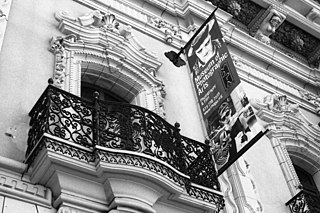
The Museum of Photographic Arts (MOPA) is a museum in Balboa Park in San Diego, California. First founded in 1974, MOPA opened in 1983. MOPA is one of three museums in the US dedicated exclusively to the collection and preservation of photography, with a mission to inspire, educate and engage the broadest possible audience through the presentation, collection, and preservation of photography, film and video. The museum's address is 1649 El Prado, San Diego, CA, 92101.

The San Diego Natural History Museum is a museum in Balboa Park in San Diego, California. It was founded in 1874 as the San Diego Society of Natural History. It is the second oldest scientific institution west of the Mississippi and the oldest in Southern California. The present location of the museum was dedicated on January 14, 1933. A major addition to the museum was dedicated in April 2001, doubling exhibit space.

William Templeton Johnson was a notable San Diego architect. He was a fellow to the American Institute of Architects (AIA) in 1939.
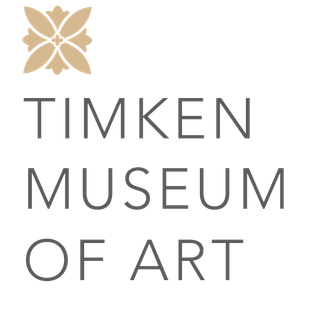
The Timken Museum of Art is a fine art museum in Balboa Park in San Diego, California, close to the San Diego Museum of Art. It was established in 1965.

The Mingei International Museum is a non-profit public institution in Balboa Park in San Diego, California, that collects, conserves and exhibits folk art, craft and design. The museum was founded in 1974, and its building opened in 1978. The word mingei, meaning 'art of the people,' was coined by the Japanese scholar Dr. Sōetsu Yanagi by combining the Japanese words for all people and art.

Sarah Miriam Peale was an American portrait painter, considered the first American woman to succeed as a professional artist. One of a family of artists of whom her uncle Charles Willson Peale was the most illustrious, Sarah Peale painted portraits mainly of Maryland, Pennsylvania, and Washington, D.C. notables, politicians, and military figures. Lafayette sat for her four times.

Lizzie Plummer Bliss, known as Lillie P. Bliss, was an American art collector and patron. At the beginning of the 20th century, she was one of the leading collectors of modern art in New York. One of the lenders to the landmark Armory Show in 1913, she also contributed to other exhibitions concerned with raising public awareness of modern art. In 1929, she played an essential role in the founding of the Museum of Modern Art. After her death, 150 works of art from her collection served as a foundation to the museum and formed the basis of the in-house collection. These included works by artists such as Paul Cézanne, Georges Seurat, Paul Gauguin, Henri Matisse, Pablo Picasso and Amedeo Modigliani.

Galka Scheyer was a German-American painter, art dealer, art collector, and teacher. She was the founder of the "Blue Four," an artists' group that consisted of Lyonel Feininger, Wassily Kandinsky, Paul Klee and Alexej von Jawlensky.

The Vision of Saint Anthony of Padua or Saint Anthony with the Christ Child is an oil on canvas painting by the Italian artist Giambattista Pittoni, completed in August 1730 in Venice. It is now in the San Diego Museum of Art in California, which acquired it in 1948.

Hanna Bekker vom Rath was a German painter, collector, patron and gallerist.

Portrait of a Young Man in Armor is a c. 1620 oil painting on canvas by Peter Paul Rubens. it his held at the Timken Museum of Art, in San Diego.
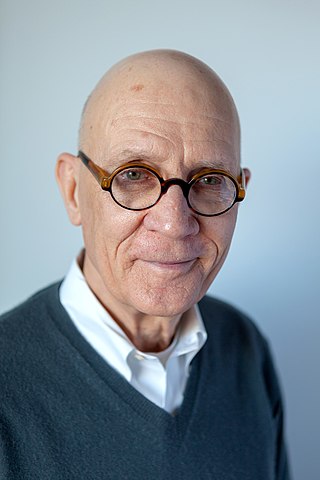
William Bryan Jordan Jr. was an American art historian who facilitated acquisitions, curated exhibitions, and authored publications on Spanish artists and still life paintings, particularly from the Golden Age.


































